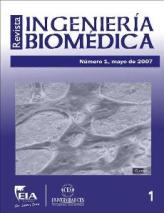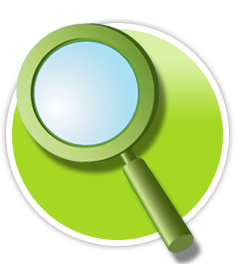DESARROLLO DE UN SISTEMA DE AUDICIÓN VIBROTÁCTIL PARA EL ACCESO A LA MÚSICA. FASE I
DESARROLLO DE UN SISTEMA DE AUDICIÓN VIBROTÁCTIL PARA EL ACCESO A LA MÚSICA. FASE I
Barra lateral del artículo
Cómo citar
Villa Moreno, A., García Quiroz, F., Castaño Jaramillo, P., & Londoño Jaramillo, N. (2011). DESARROLLO DE UN SISTEMA DE AUDICIÓN VIBROTÁCTIL PARA EL ACCESO A LA MÚSICA. FASE I. Revista Ingeniería Biomédica, 1(1), 60–65. https://doi.org/10.24050/19099762.n1.2007.21
Palabras clave:
Número
Sección
Artículo original
Licencia
![]()
Esta obra está bajo una Licencia Creative Commons Atribución-NoComercial-NoDerivativa 4.0 Internacional
Contenido principal del artículo
Adriana Villa Moreno
Programa de Ingeniería Biomédica EIA-CES. Líneas de Boinstrumentación, Señales e Imágenes Médicas
Felipe García Quiroz
rograma de Ingeniería Biomédica EIA-CES. Líneas de Boinstrumentación, Señales e Imágenes Médicas
Paula Castaño Jaramillo
rograma de Ingeniería Biomédica EIA-CES. Líneas de Boinstrumentación, Señales e Imágenes Médicas
Nathalia Londoño Jaramillo
rograma de Ingeniería Biomédica EIA-CES. Líneas de Boinstrumentación, Señales e Imágenes Médicas
Resumen
Mediante el sentido del tacto es posible transmitir gran cantidad de información al sistema nervioso central, que se procesa en la corteza cerebral de manera similar a como se realiza en las áreas específicas para la audición y la visión. Los dispositivos de estimulación táctil utilizan dos modalidades básicas: vibrátil o eléctrica, de las cuales la primera ha sido elegida para el sistema presentado. Los sistemas de audición vibrotáctil se han enfocado al desarrollo de habilidades comunicativas, sin embargo con este trabajo se busca la construcción de un dispositivo que permita evaluar la posibilidad de lograr habilidades musicales y artísticas reflejadas en la capacidad de identificación e interpretación de piezas musicales, a partir de la estimulación vibrotáctil.
El sistema fue desarrollado con una interfaz gráfica en LabVIEW 7.0. Ésta permite el aprendizaje del sistema de audición con herramientas propias específicas para aumentar la sensibilidad del usuario. Además, se implementaron diferentes métodos de realimentación visual que permiten establecer relaciones directas con conceptos de acústica y teoría de la música.
Abstract—The sense of touch transmits not only isolated tactile sensations also information that can be processed at the cerebral cortex in a similar way as it is in the brain areas for audition or vision. Both vibratile and electrical stimuli have been used for tactile stimulation devices, and the former was chosen for the system presented. The tactile auditory-substitution systems have focused on communication skills, but this work pretends the construction of a device for developing musical and artistic skills. These should be reflected in the capacity to identify musical pieces through tactile stimulation.
The graphical user interface of the system was programmed using the virtual instrumentation software LabVIEW 7.0. It includes tools for the learning of the system, which were developed to help increasing the sensitivity of the user. Besides, to ensure a clear association with music theory and acoustic concepts some visual feedback systems were implemented.
El sistema fue desarrollado con una interfaz gráfica en LabVIEW 7.0. Ésta permite el aprendizaje del sistema de audición con herramientas propias específicas para aumentar la sensibilidad del usuario. Además, se implementaron diferentes métodos de realimentación visual que permiten establecer relaciones directas con conceptos de acústica y teoría de la música.
Abstract—The sense of touch transmits not only isolated tactile sensations also information that can be processed at the cerebral cortex in a similar way as it is in the brain areas for audition or vision. Both vibratile and electrical stimuli have been used for tactile stimulation devices, and the former was chosen for the system presented. The tactile auditory-substitution systems have focused on communication skills, but this work pretends the construction of a device for developing musical and artistic skills. These should be reflected in the capacity to identify musical pieces through tactile stimulation.
The graphical user interface of the system was programmed using the virtual instrumentation software LabVIEW 7.0. It includes tools for the learning of the system, which were developed to help increasing the sensitivity of the user. Besides, to ensure a clear association with music theory and acoustic concepts some visual feedback systems were implemented.
Descargas
Los datos de descargas todavía no están disponibles.


 http://hdl.handle.net/11190/86
http://hdl.handle.net/11190/86
 FLIP
FLIP







